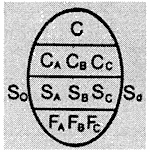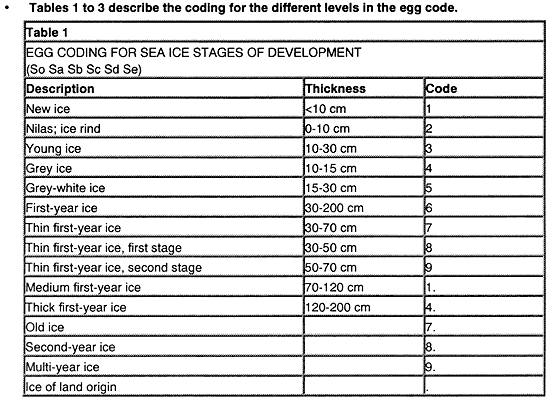・ Egg Code
The basic data concerning concentrations, stages of development (age), and form (floe size) of ice are contained in a simple oval form. A maximum of three ice types are described within the oval. This oval, and the coding within it, are referred to as the "Egg Code".

Figure 1 shows the egg code as it appears on ice charts.
1. The symbols in the code are classed into four categories of ice information :
2. Total concentration-top level
3. Ct-Total concentration of ice in the area, reported in tenths.
4. Partial concentrations of ice types-second level
5. CaCbCcCd-Partial concentrations of thickest (Ca), second thickest (Cb), third thickest (Cc) and fourth thickest (Cd) ice, in tenths.
6. Ice type corresponding to the partialconcentrations on the second level-third level
7. Stage of development of thickest (So), second thickest (Sa), third thickest (Sb), and fourth thickest (Sc) ice, and the thinner ice types Sd and Se, of which the concentrations are reported by Ca, Cb, Cc, Cd, respectively.
8. Predominant floe size category for the ice type and concentration-bottom level
Floe Size corresponding to Sa, Sb, Sc, Sd, and Se (when Sd and Se are greater than a trace).
